The Toyota Kluger and Kia Sorento are large, seven-seat SUVs designed for bigger families which can’t bear to think of themselves getting around in a people mover such as a Kia Carnival or Honda Odyssey.
If you’re considering a Kluger and Sorento, then your timing couldn’t be better. The new generations of these SUVs arrived in the past year or so.
I went to the launch of both new-gen models and what I’ve done here is put together this comparison covering everything you need to know, and more…
How do they look?
The Kluger and Sorento are tough-looking SUVs, but to me the Toyota appears relatively simple and conservative in an almost ‘government issue’ way. The Kia is far more extravagant and modern in its styling, inside and out.
Let’s take a closer look at the Kluger first.
The Kluger is about as beautiful as its name, which isn’t very. Still, while it doesn’t have the futuristic face of the Kia Sorento it does look tough and serious.
Having spent time driving it in the suburbs where off-road utes rule, I can tell you it commanded a bit of respect even while I was blocking an entire street with my eleventy-point turn.
The Kluger looks like a larger version of the RAV4 with its moustache-like grille and blade headlights. The Kluger isn’t as angular as its mid-sized sibling and you can see the curves in the rear haunches which wrap around to the tailgate.
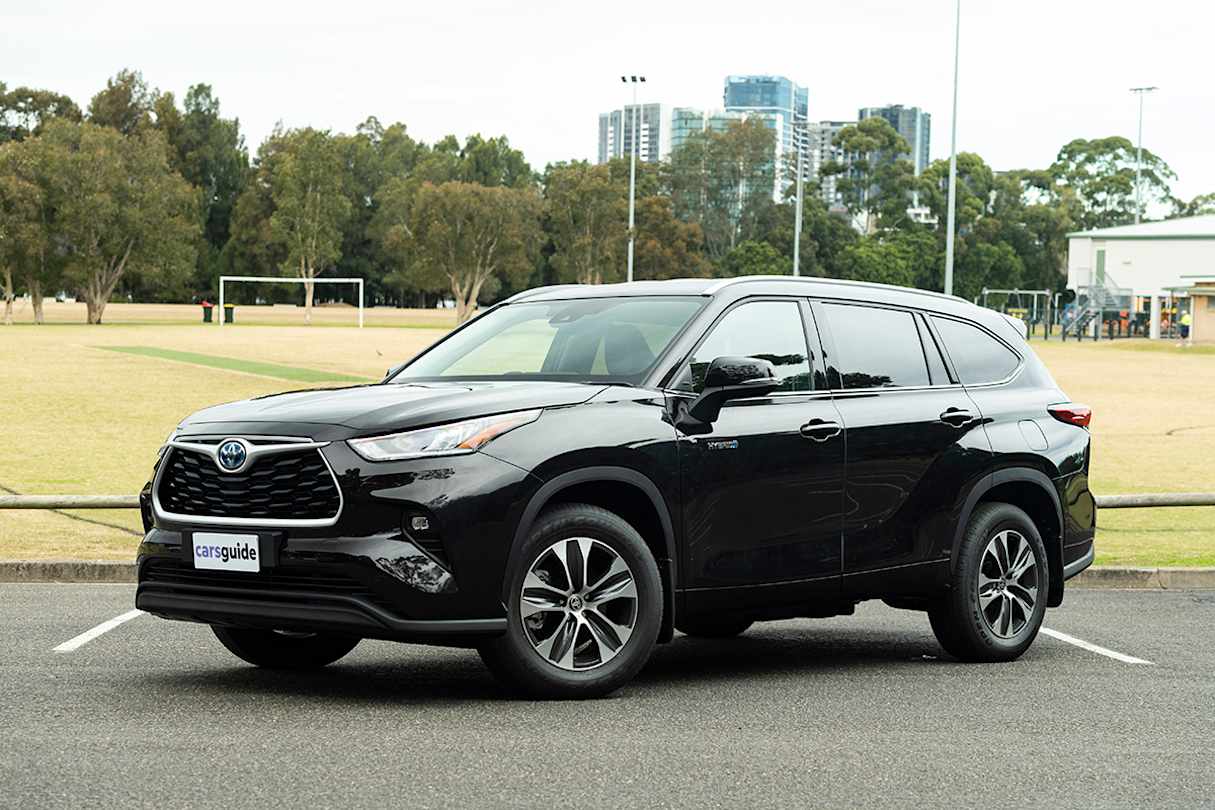
The GX is the entry-grade and above that is the GXL – they have 18-inch alloy wheels, but only the top-of-the-range Grande has 20-inch rims and they come with chrome-effect paint, which might be OTT for some.
The cabin is more functional than fashionable with a dashboard dominated by what appears to be one of those big pizza paddles which holds the media screen and climate control dials.
The GX has black cloth-trimmed seats, a leather-wrapped steering wheel and shift lever, the GXL has synthetic leather seats, and the Grande has actual leather upholstery.
There are soft-touch surfaces with stitching, but all grades still have hard plastics galore and styling which lacks the premium look of some rivals.
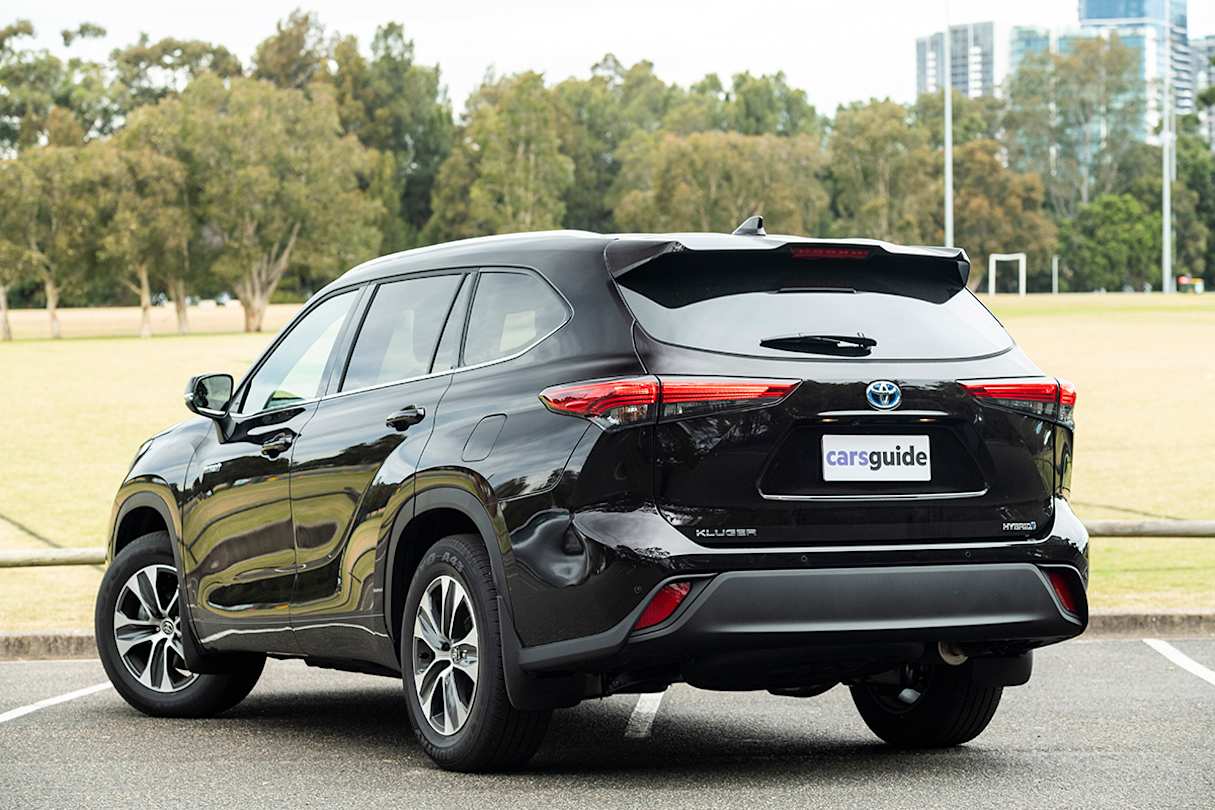
There are nine paint colours to choose from: 'Graphite metallic', 'Atomic Rush Red mica', 'Liquorice Brown mica', 'Saturn Blue metallic', 'Galena Blue metallic', 'Crystal pearl', 'Silver Storm metallic' and 'Eclipse Black.'
The Kluger’s dimensions show it to be 4966mm end-to-end, 1930mm across and 1755mm tall.
The Sorento is about 150mm less in length at 4810mm long, 30mm narrower at 1900mm wide, and 55mm shorter in height at 1700mm tall.
And while the new Kluger looks a lot like the old version, the new-generation Sorento looks nothing like the last one… n-o-t-h-i-n-g like the last one.
Well, apart from the rear, side window which has the same angle to it, which is an intentional nod to the previous model.

The outgoing version was premium and friendly-looking, but its proportions seem bloated compared to the muscular, angular, new-generation Sorento.
It appears to have had an attitude change, too. Sure, this is a family SUV but there are muscle car traits from the Camaro-style headlights flanking that cliff face of a grille, to the Mustang-esque tail-lights, with everything in between filled with sharp edges.
The cabin is even more striking with its cheese-grater textures in the dash and doors, the large centre console with chrome trim and rotary shifter.
The 10.25-inch media display, standard on the Sport grade and above, is the most interesting I’ve seen on any car I’ve tested.
The level of detail, thought, and styling which has gone into it is obvious with its neon people, fonts and icons, old-school bulb effect for radio frequencies, and even the ‘street light’ mode for the navigation is intriguing. At the same time, it’s also one of the easiest to use systems I’ve encountered.
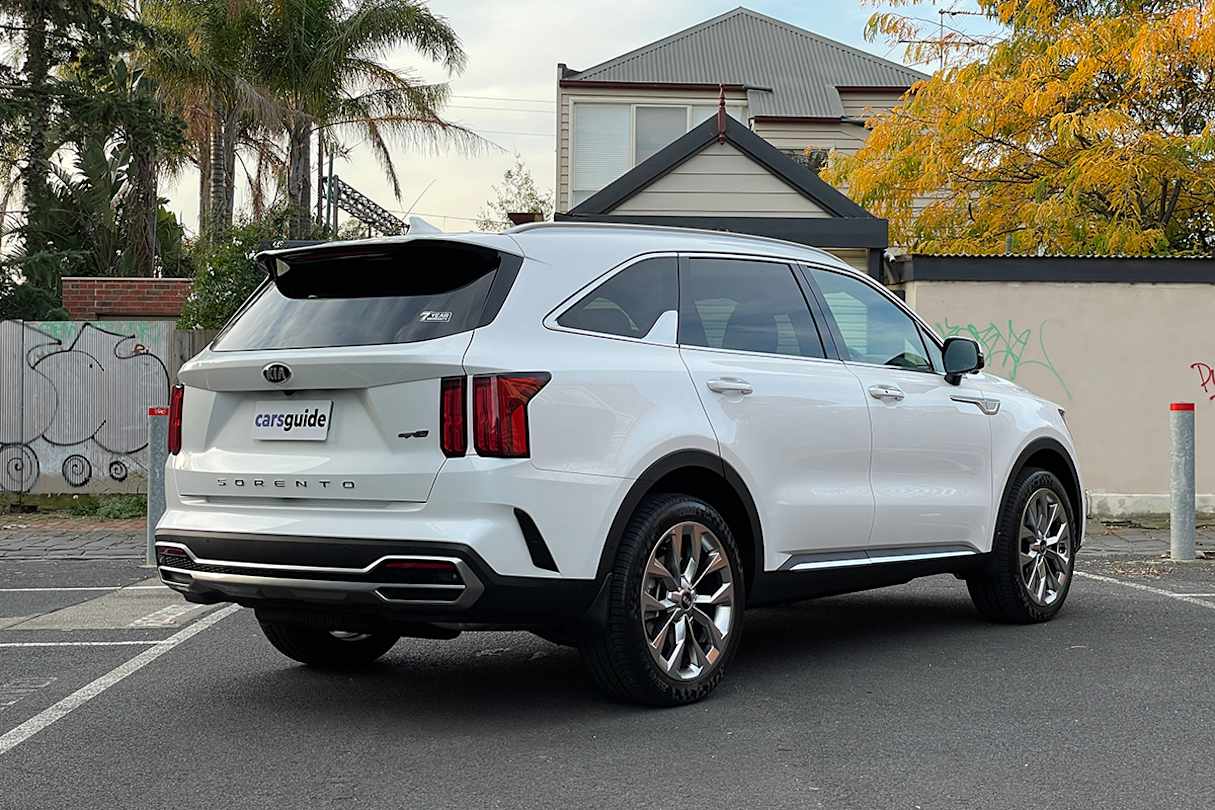
The top-grade GT-Line steps up the premium look with its fully-digital instrument cluster and Nappa leather seats.
The materials feel high quality, while the fit and finish is superb.
There are seven colours to pick from but only 'Clear White' doesn’t demand the $695 cost of the rest, which include, 'Silky Silver', 'Steel Grey', 'Mineral Blue', 'Aurora Black', 'Gravity Blue' and 'Snow White Pearl.'
Score out of 5
Kluger | Sorento |
3 | 4.5 |
How do they drive?
For yonks it was the Mazda CX-9 that was the best seven-seater SUV for the money when it came to the driving, but not any more.
The Kluger stole that title from the big Mazda in my comparison this year. And I can safely say the Kluger is better to pilot than the Sorento.
See, seven-seater SUVs like these don’t need to have sports car handling and the firm ride which goes with it, nor a revvy engine that wants to race.
For most of the time, they are suburban workhorses and from a parent’s perspective they need to be effortless and comfortable to drive.
The Sorento is indeed effortless and comfortable to pilot, but this new Kluger is even more so – particularly the hybrid version which adds a smoothness at lower speeds that a combustion-engine powered Sorento (or Kluger) with a torque converter transmission can’t match.
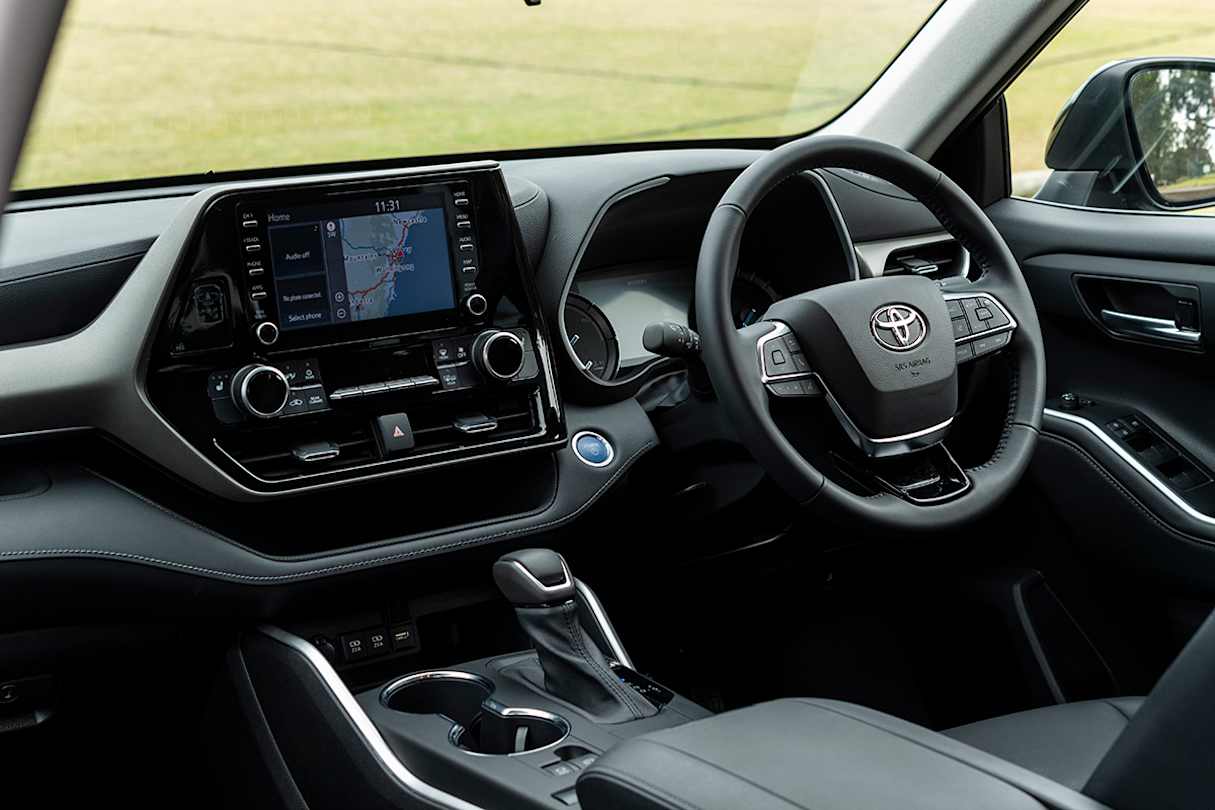
As far as the specs go the Kluger’s 3.5-litre V6 petrol engine makes 218kW/350Nm and shifting gears is an eight-speed automatic. You can have this in all-wheel drive or front-wheel drive.
The Sorento also has a 3.5-litre petrol V6 and an eight-speed auto, but produces a smidge less at 206kW/336Nm. The petrol Sorento comes exclusively in front-wheel drive.
The hybrid Kluger has three electric motors with one driving the front axle (134kW/270Nm), one at the rear (40kW/121Nm), and another supplementary 'motor generator.'
The hybrid also has a 2.5-litre, four-cylinder petrol engine producing 142kW/242Nm.
Toyota doesn’t provide a total torque figure but the hybrid system delivers a combined power output of 184kW. And the hybrid Kluger is all-wheel drive only.
A hybrid variant of the Sorento is also now offered in Australia. Unlike the Kluger hybrid the Sorento is a plug-in hybrid electric vehicle or PHEV. Yep, that’s right you’ll need to plug the Sorento hybrid into a wall unit or powerpoint to charge the batteries and get the most out of this SUV.

For how it drives head on over to my colleague Tom White’s review. But what I can tell you is that the Sorento PHEV teams a 1.6-litre four-cylinder turbo petrol engine making 132kW/265Nm with an electric motor producing 67kW/304Nm inside the transmission. The Sorento PHEV is all-wheel drive only.
Kia also has the diesel fans covered too - there is turbo-diesel four-cylinder making 148kW/440Nm. The diesel Sorento is all-wheel drive only, too.
Score out of 5
Kluger | Sorento |
4.5 | 3 |
How spacious?
The Kluger and Sorento are seven-seater SUVs, although the third rows are not going to be comfortable or spacious for most adults.
I’m 191cm (6'3") tall so those back seats are out for me, but I found the Sorento offered better head space and legroom than the Kluger in its third row.
The Kluger wins for second-row roominess and the space up front is vast, making the Sorento’s cockpit feel compact in comparison.
The cargo capacity of the Sorento’s boot with the third row folded flat is 616 litres, while the Kluger has a 552-litre volume. With the third row in place the Sorento boot is 187 litres and the Kluger’s is 241 litres.
Cup holder count? The Kluger and Sorento both have eight (two up front, two in the second row and four in the third row).
The Sorento has a full-sized spare wheel, while Kluger owners will have to hobble to a tyre repair centre on a space saver spare.
Kluger | Sorento | |
Boot space (all seats up) | 241L | 187L |
Boot space (third row down) | 552L | 616L |
Spare | Space-saver | Full-sized |
Score out of 5
Kluger | Sorento |
4 | 4 |
How easy to use every day?
This is where I normally tell you about things such as automatic tailgates and parking sensors, and we’ll cover that, but the Sorento can do something so cleverly helpful and almost unheard of – remote park itself (without you in the car).
This parking feature is standard on the GT-Line and is operated through the key fob which acts like a remote control only the vehicle steers itself autonomously into and out of car spaces.
The purpose of the remote parking is for driving the car in and out of tight cars spaces where it might be difficult for passengers to open their doors to enter of exit the car.
The Kluger can’t match that super power but neither can the rest of the Sorentos in the range, so let’s look at the other ways they make life easier.
The entry-grade S Sorento has auto LED headlights, as does the base Kluger, both also have rain-sensing wipers, a reversing camera, plus front and rear parking sensors. The Toyota has push-button start and a proximity key whereas the cheapest Sorento doesn’t.
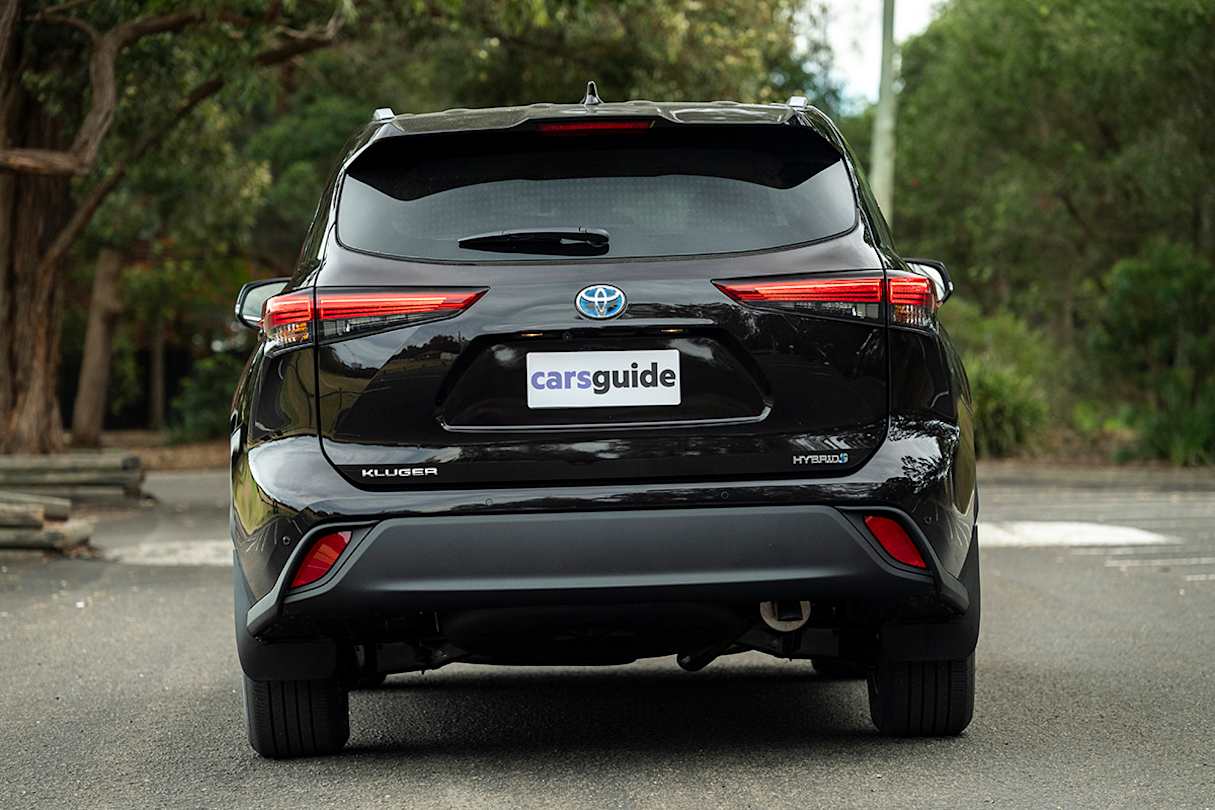
You’ll need to step up to the mid-grade Sorento Sport+ to get the push-button ignition and a proximity key, there’s also dual-zone climate control with directional rear air vents, privacy glass, remote engine start and a tailgate which will open when it notices you loitering behind it for a few seconds.
The Kluger GXL is the second rung up in the range and adds the auto tailgate, plus three-zone climate and heated front seats.
The top grade Sorento GT-Line scores heated front and second row seats, a wireless phone charger, a head-up display and the amazing remote parking feature we talked about.
The top-of-the-range Kluger Grande scores ventilated front seats and a gesture tailgate.
As for power outlets, the entry-grade Sorento gets three USB ports up front and two in the second row, plus there’s a 12V point in the dash and the cargo area.
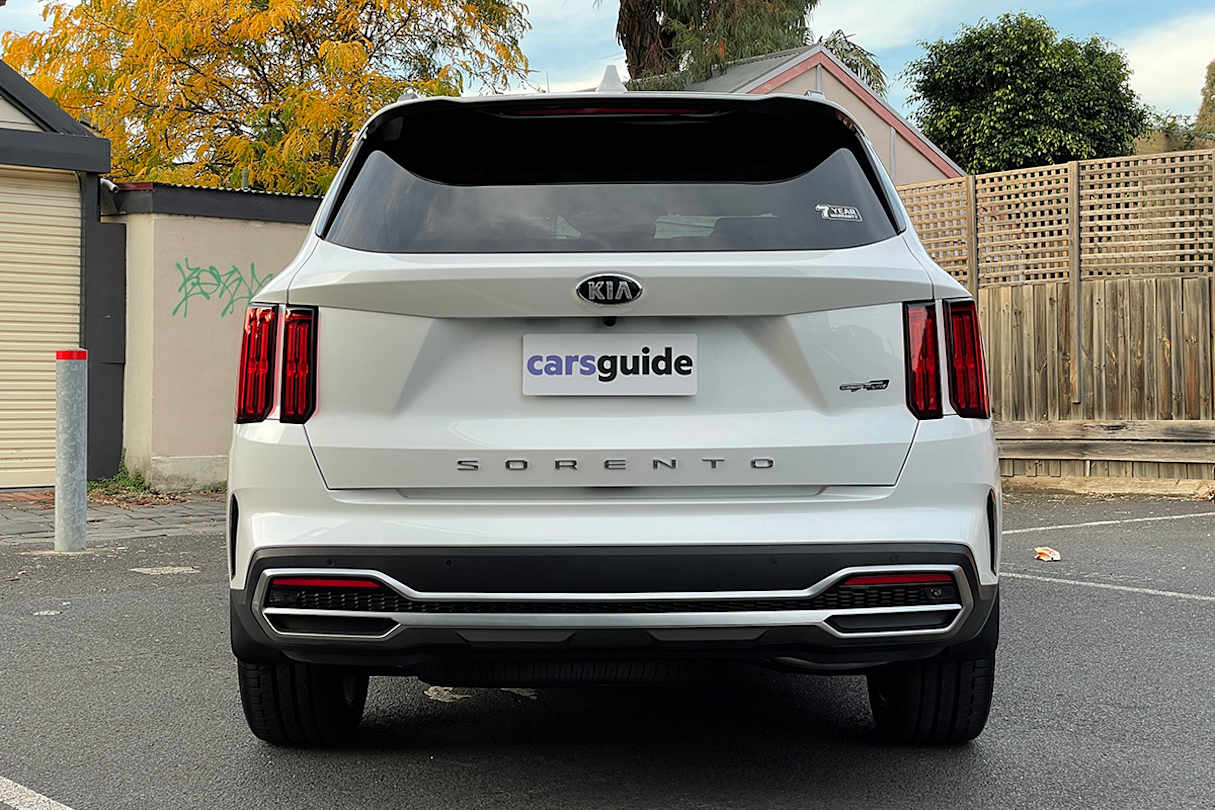
The top two Sorento grades come with three USB ports in the second row and two in the third row.
The Kluger isn’t as well furnished with USB ports with all grades coming with two up front and two in the second row. The Kluger has two 12V outlets and they’re both in the front.
Entry into the Kluger is better than the Sorento, and by that I mean the doors open wider, the space to climb into the third row is better.
Both have a high load height for their boots and while getting into the third row is never as easy as stepping into a people mover, I found the Kluger offered better access to those very back seats.
Kluger | Sorento | |
Number of seats | Seven | Seven |
Keyless entry | Yes | Higher grades |
Auto tailgate | Higher grades | Higher grades |
Climate control | Three-zone on higher grades | Three-zone on higher grades |
Parking sensors (front and rear) | Yes | Yes |
Reversing camera | Yes | Yes |
Score out of 5
Kluger | Sorento |
3.5 | 4 |
How safe?
There’s something you need to know about the safety of these cars. Ready? The third row airbags in the Kluger and Sorento don’t extend to cover the occupant’s heads in those very back seats.
It’s an unacceptable shortcoming on vehicles built for families. The carmakers know that it is children who will mainly be sitting in these rear seats and would be aware that kids won’t be as adequately protected by airbags as the other occupants.
This alone would be a deal breaker for me if I was looking for a seven-seat SUV and intended regularly using those rear seats for my children.
If I needed seven seats regularly, I’d pick a Kia Carnival, a Mazda CX-9, or a Hyundai Palisade because they all have side curtain airbags which extend to cover the third row occupants' heads.
Somehow ANCAP has given both SUVs the maximum five-star rating with the Kluger being tested in 2021 and the Sorento in 2020.
Are you still there? Understand if you’re not.
Look, it’s a shame these SUVs are let down by such a simple thing when the rest of the safety tech in both cars is so advanced and comprehensive.
All grades of the Kia Sorento come with AEB with pedestrian and cyclist detection, rear cross-traffic alert and blind spot collision avoidance.
Then the GT-Line also has blind-spot view monitoring, which shows the view behind you on whichever side you’re indicating towards.
There are ISOFIX points and top tether mounts for the third-row seats, plus two more ISOFIX points and three top tethers mounts across the second row.
It’s good to see the Sorento has kept its full-sized spare wheel, which is under the car.
All Klugers come standard with AEB with pedestrians and cyclist detection, there’s also blind-spot warning, lane keeping assistance, rear cross-traffic alert, and adaptive cruise control.
For child seats there are three top tether anchor points and two ISOFIX points in the second row.
Kluger | Sorento | |
ANCAP | Five (2021) | Five (2020) |
Third row airbags | Do not cover occupants’ heads | Do not cover occupants’ heads |
Auto emergency braking | Yes (vehicle, cyclist and pedestrian) | Yes (vehicle and pedestrian) |
Adaptive cruise control | Yes | Yes |
Lane departure warning | Yes | Yes |
Lane keeping assistance | Yes | Yes |
Blind spot monitoring | Yes | Yes |
Rear cross traffic alert | Yes | Yes |
Traffic sign recognition | Yes | No |
Reversing camera | Yes | Yes |
Parking sensors (front and rear) | Yes | Yes |
Score out of 5
Kluger | Sorento |
3.5 | 3.5 |
What’s the tech like?
When it comes to tech, the Kluger feels like it’s from the Stone Age (okay, maybe the early 2000s) compared to the Sorento.
All Klugers come with an 8.0-inch media display, but only the entry-grade Sorento has a monitor this small. The rest have a big, landscape 10.25-inch screen and the top-grade Sorento (the GT-Line) has a 12.3-inch fully digital instrument cluster.
The graphics and colours of the Sorento’s 10.25-inch display are dazzling with high-end tech touches such as a ‘nixie light bulb’ radio tuner feature, a ‘streetlamp’ sat nav feature (which is always lighting your way on a map), and ambient soundscapes such as rain and a café atmosphere.
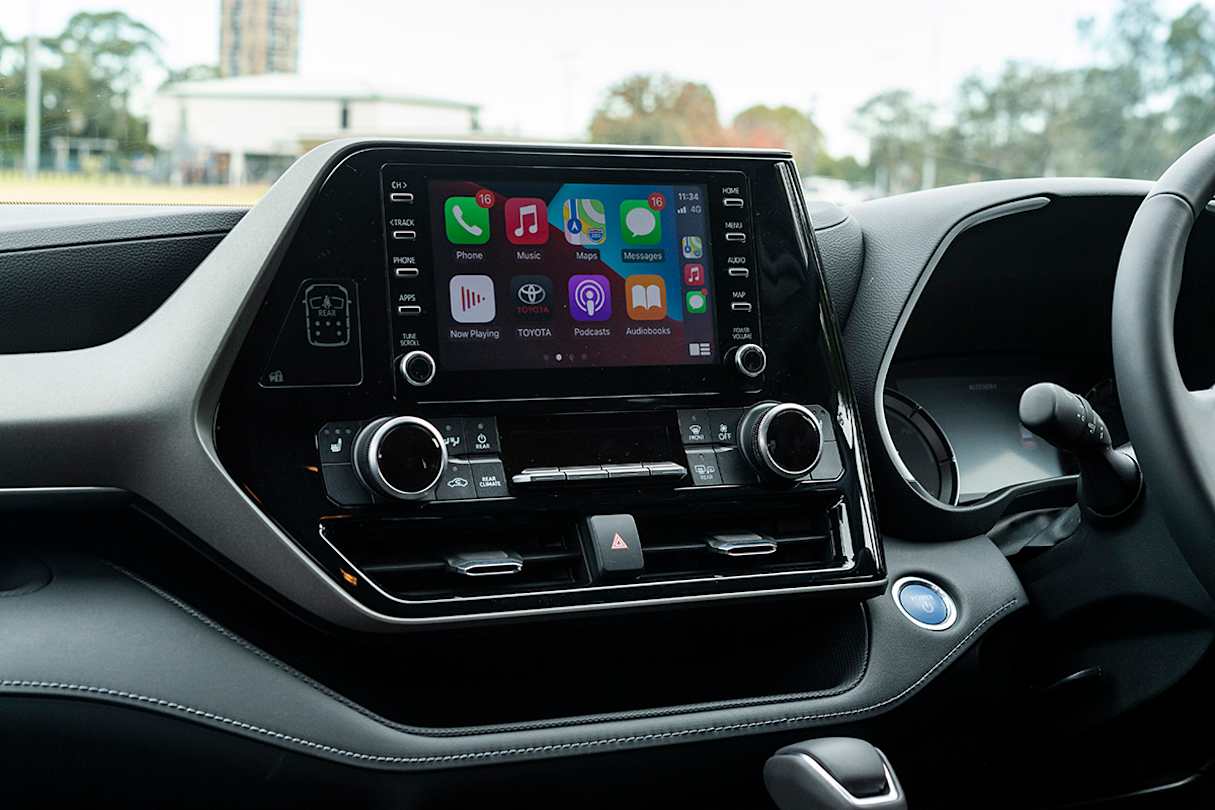
The Kluger’s small screen feels old, slow to react and has a confusing format. A bit like me, really.
The GT-Line comes standard with a head-up display (the Kluger doesn’t) and wireless phone charging (Kluger doesn’t either).
The entry grades of the Kluger and Sorento don’t have built-in sat nav, but the rest of both line-ups do, and Apple CarPlay and Android auto is standard across the ranges, too.

Kluger | Sorento | |
Multimedia screen | Eight-inch screen | 10.25-inch screen (higher grades) |
Apple CarPlay/Android Auto | Yes | Yes |
Wireless phone charging | No | Yes (top grade) |
Built-in sat nav | Yes (higher grades) | Yes (higher grades) |
Score out of 5
Kluger | Sorento |
3 | 4.5 |
How much do they cost to own?
The Kluger has a five-year/unlimited kilometre warranty, while the Sorento comes with seven-year/unlimited kilometre cover.
Servicing is recommended at 12 month/15,000km intervals for both and the pricing is capped.
The Sorento wins hands down, right? Let’s hit the showers.
Whoa there! Keep your gym shorts on.
See, if you look at the servicing costs the Kluger is more affordable. Each annual service for the Kluger is $250 that’s $1250 over five years.
For the Sorento V6 petrol Kia says servicing over five years amounts to $2388. The diesel has similar pricing.
Kluger | Sorento | |
Warranty | Five-year/unlimited km | Seven-year/unlimited km |
Service interval | 12mnths/15,000km | 12mnths/15,000km |
Average cost per service (over five years) | $250/service | $478/service |
Roadside assist cover | No | Yes (7yr) |
Score out of 5
Kluger | Sorento |
4 | 3.5 |
Verdict
The Kluger may not be as refined and modern looking as the Sorento, but it is better to drive and more affordable to maintain. That’s not enough though to beat the big Kia which has better tech and is easier to use every day.
They're equal, however, in a not-so-good way. These SUVs having cutting-edge safety tech, but not having third row airbags which adequately cover the occupants’ heads in those third-row seats, is a big disappointment.
The Kia Sorento wins this comparison against the Toyota Kluger thanks to its superb design, great tech and ease of use.
Final Scores
Kluger | Sorento | |
How do they look? | 3 | 4.5 |
How do they drive? | 4.5 | 3 |
How spacious? | 4 | 4 |
How easy to use every day? | 3.5 | 4 |
How safe? | 3.5 | 3.5 |
What’s the tech like? | 3 | 4.5 |
How much do they cost to own? | 4 | 3.5 |
OVERALL | 3.6 | 3.9 |







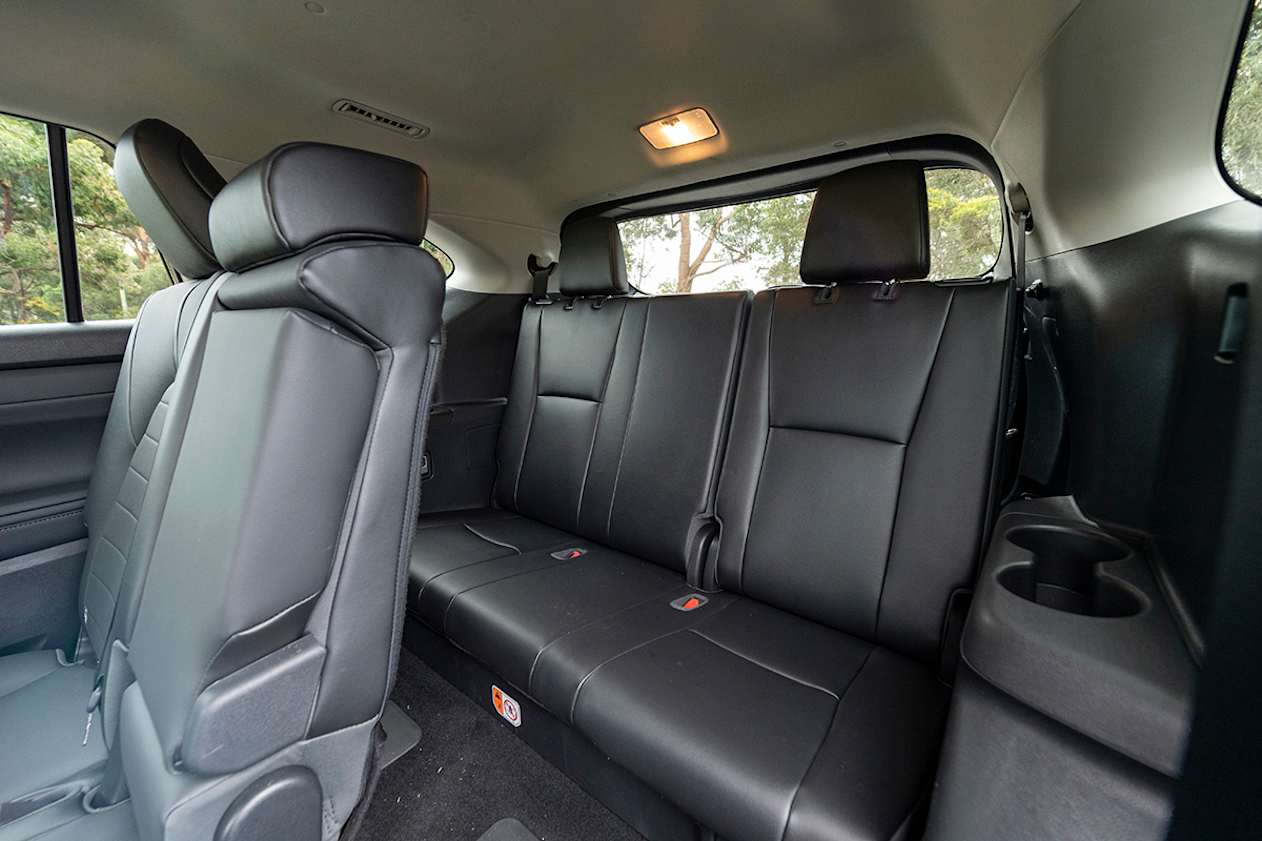
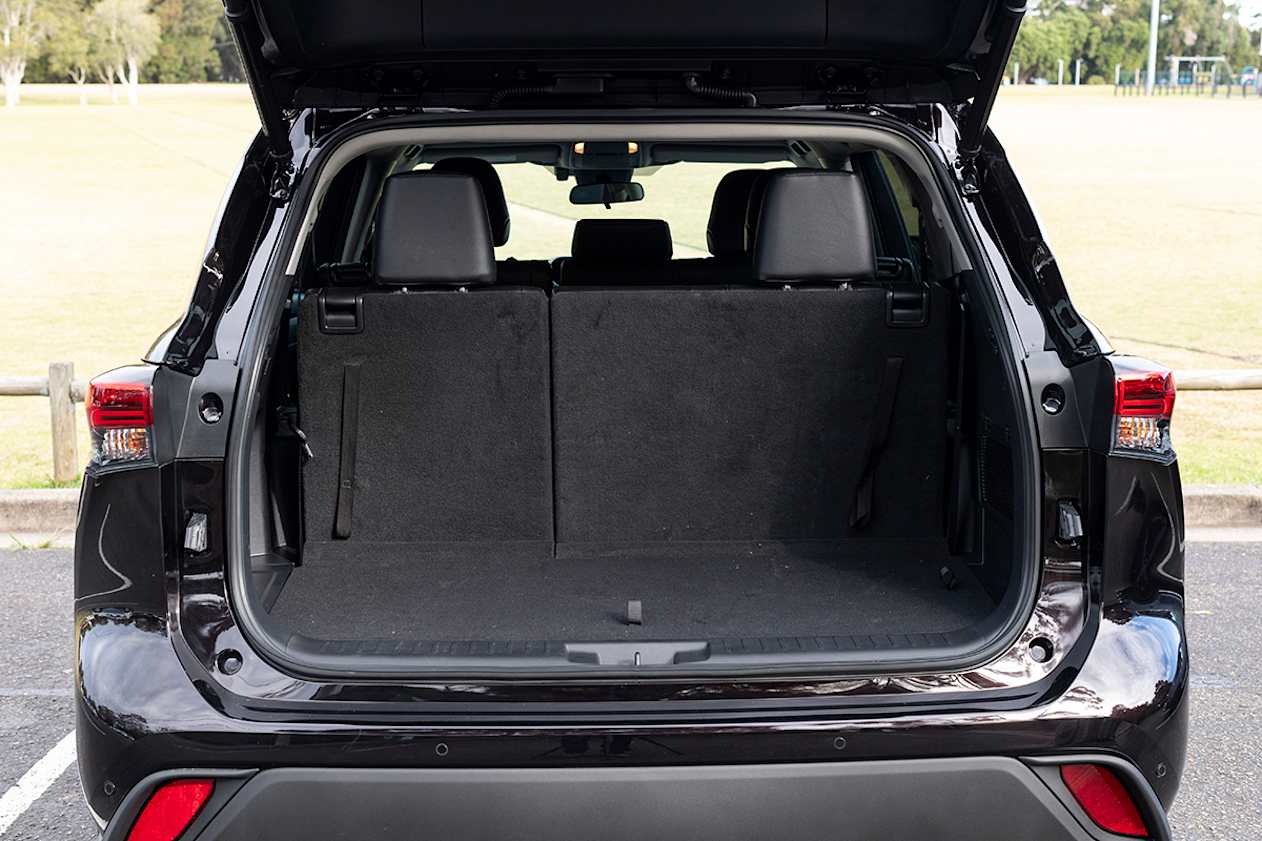
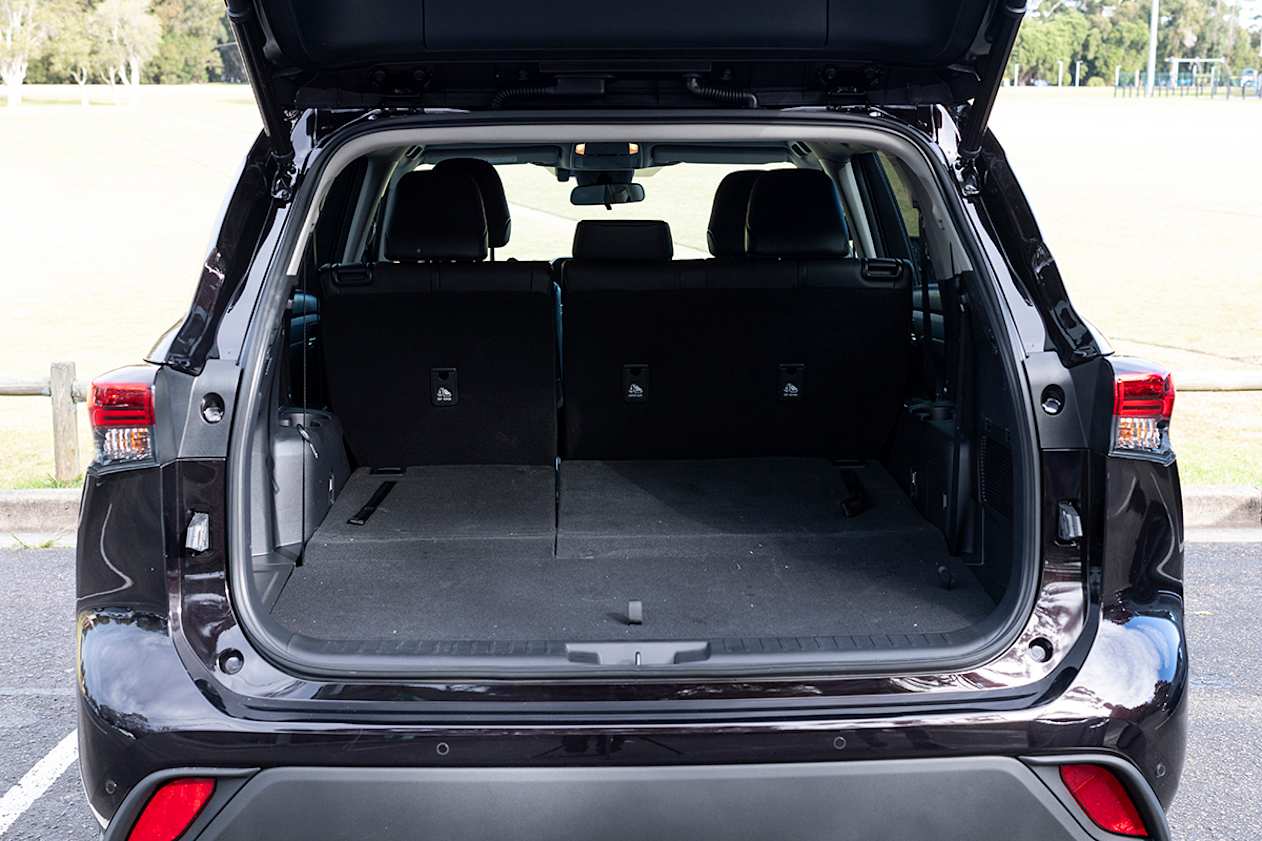



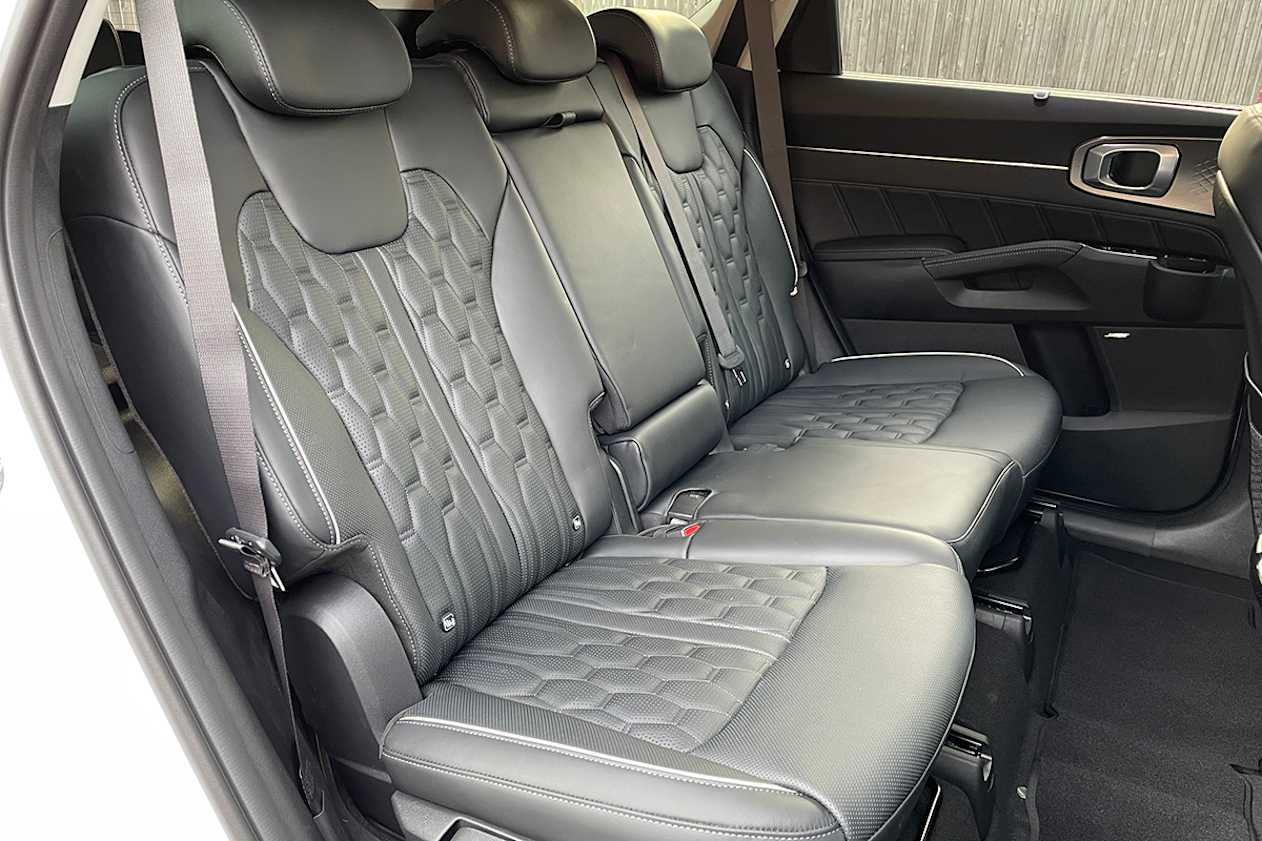
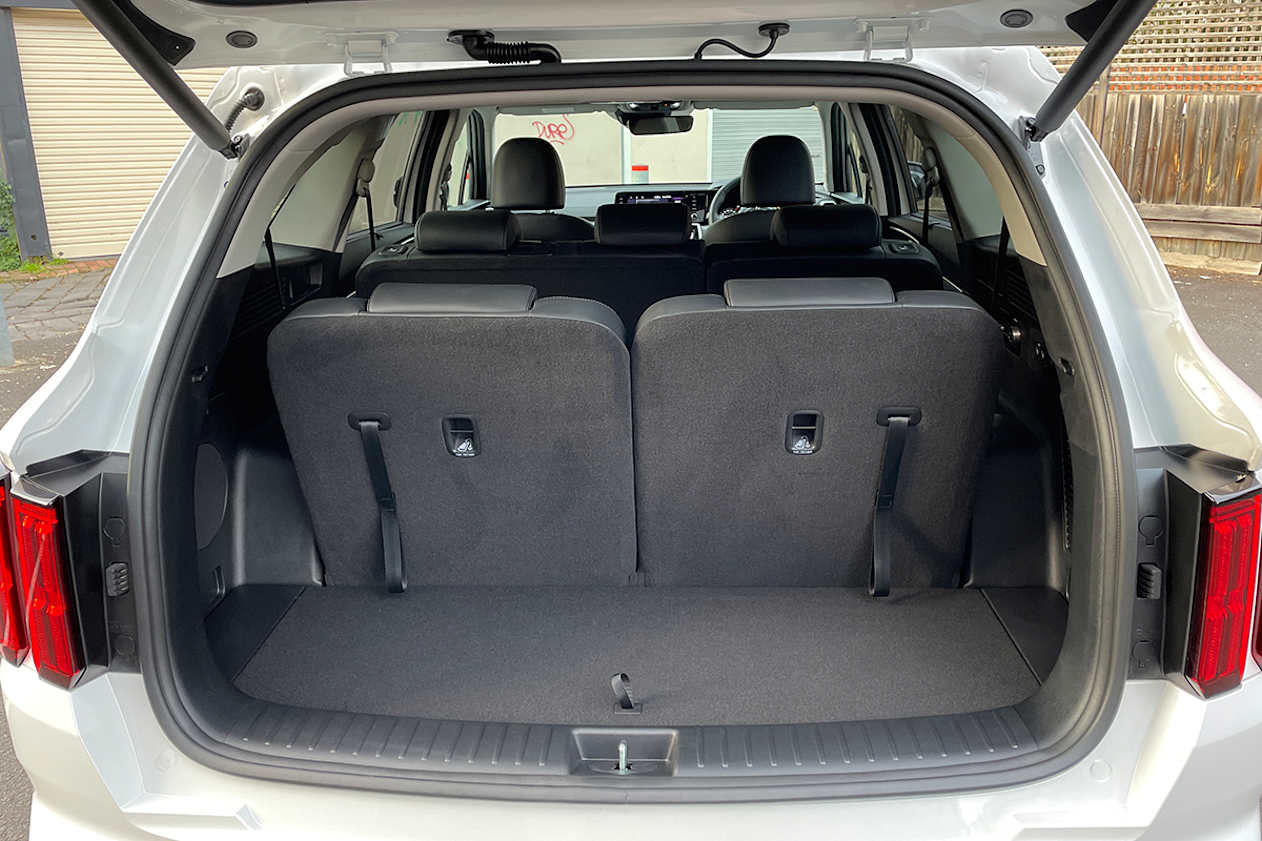
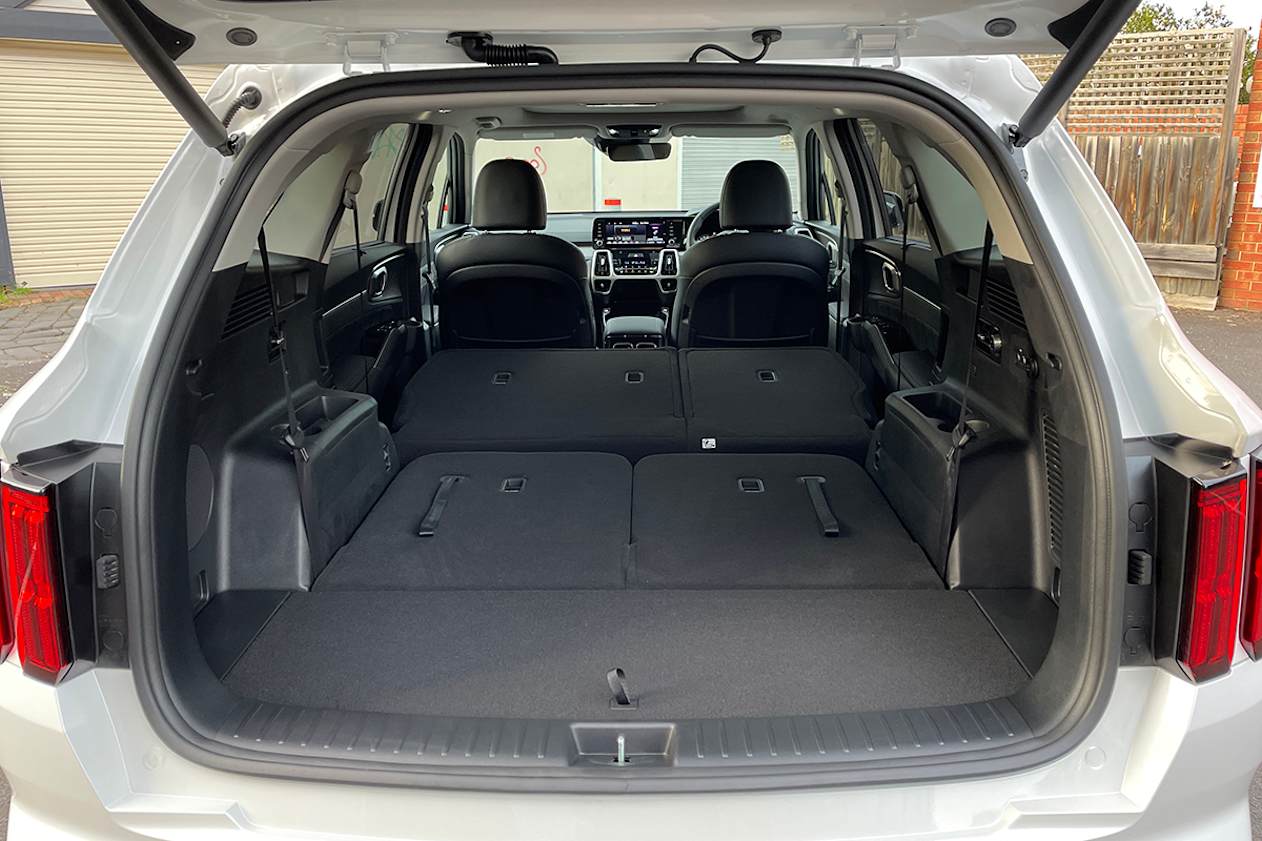







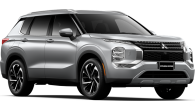


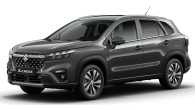


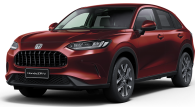

.png)





.png)
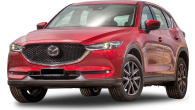









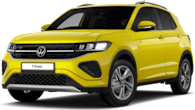



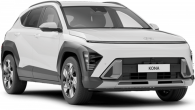




.png)




.png)

.png)
.png)
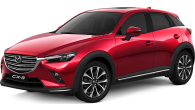
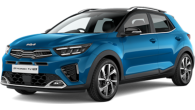




.png)



.png)
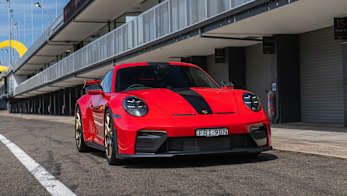
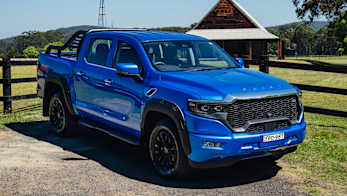
.jpg)
